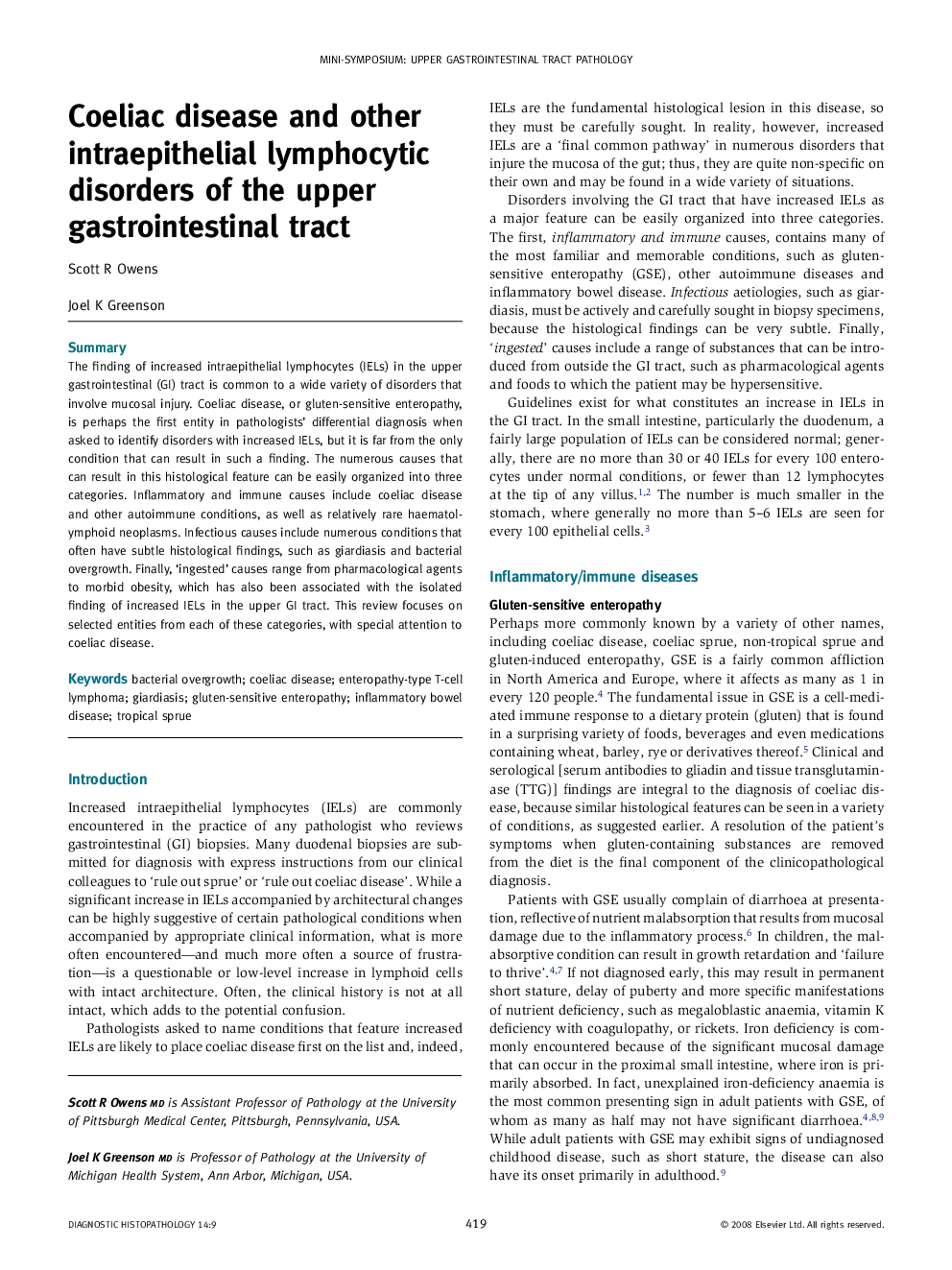| Article ID | Journal | Published Year | Pages | File Type |
|---|---|---|---|---|
| 4131568 | Diagnostic Histopathology | 2008 | 8 Pages |
SummaryThe finding of increased intraepithelial lymphocytes (IELs) in the upper gastrointestinal (GI) tract is common to a wide variety of disorders that involve mucosal injury. Coeliac disease, or gluten-sensitive enteropathy, is perhaps the first entity in pathologists’ differential diagnosis when asked to identify disorders with increased IELs, but it is far from the only condition that can result in such a finding. The numerous causes that can result in this histological feature can be easily organized into three categories. Inflammatory and immune causes include coeliac disease and other autoimmune conditions, as well as relatively rare haematolymphoid neoplasms. Infectious causes include numerous conditions that often have subtle histological findings, such as giardiasis and bacterial overgrowth. Finally, ‘ingested’ causes range from pharmacological agents to morbid obesity, which has also been associated with the isolated finding of increased IELs in the upper GI tract. This review focuses on selected entities from each of these categories, with special attention to coeliac disease.
